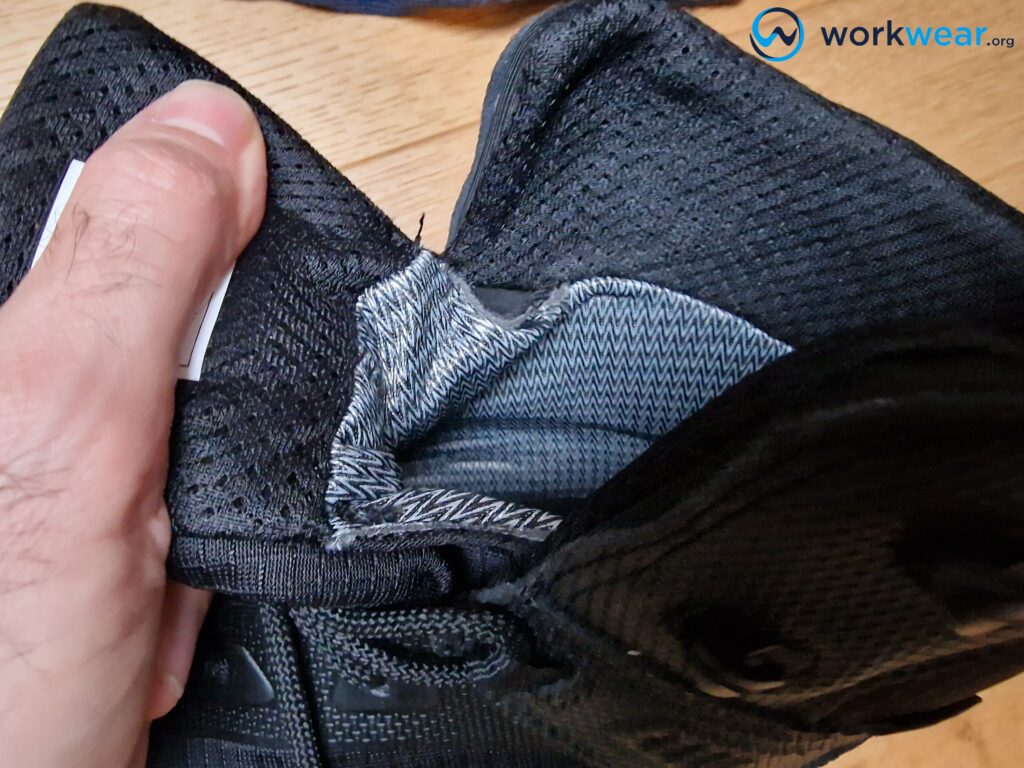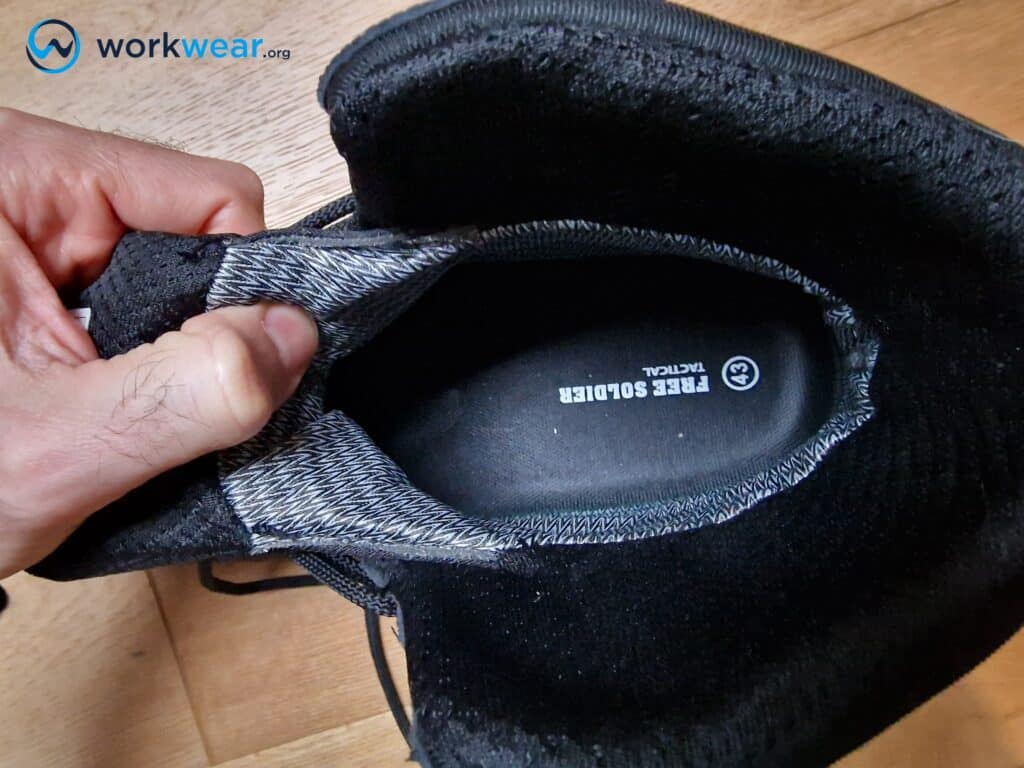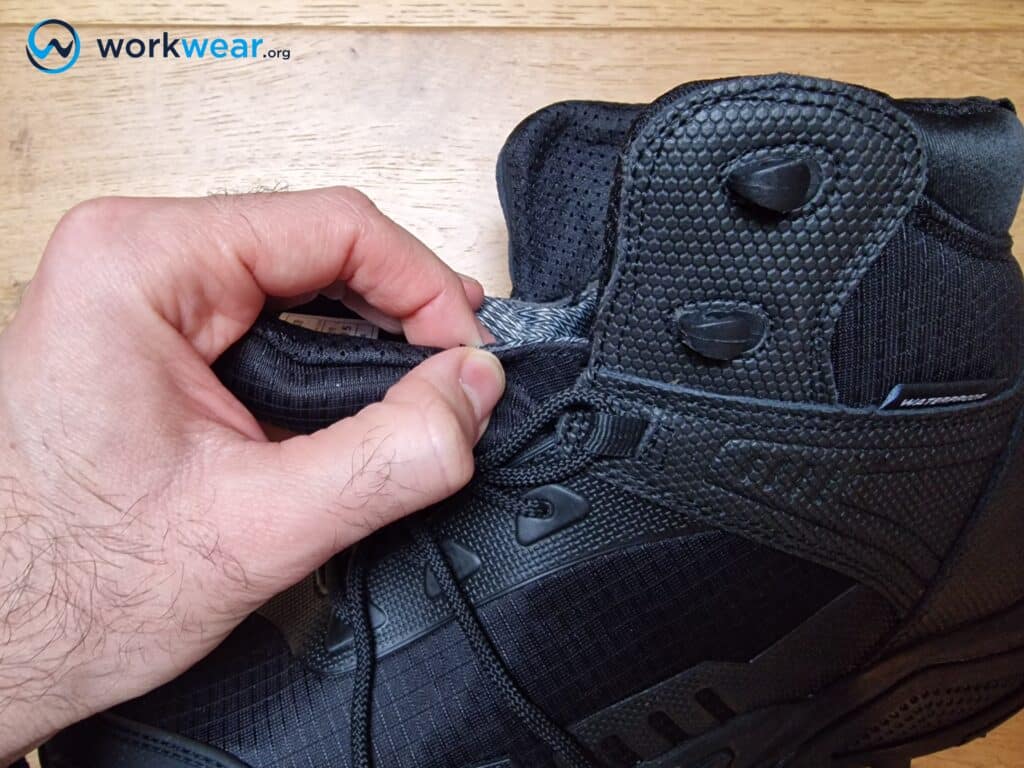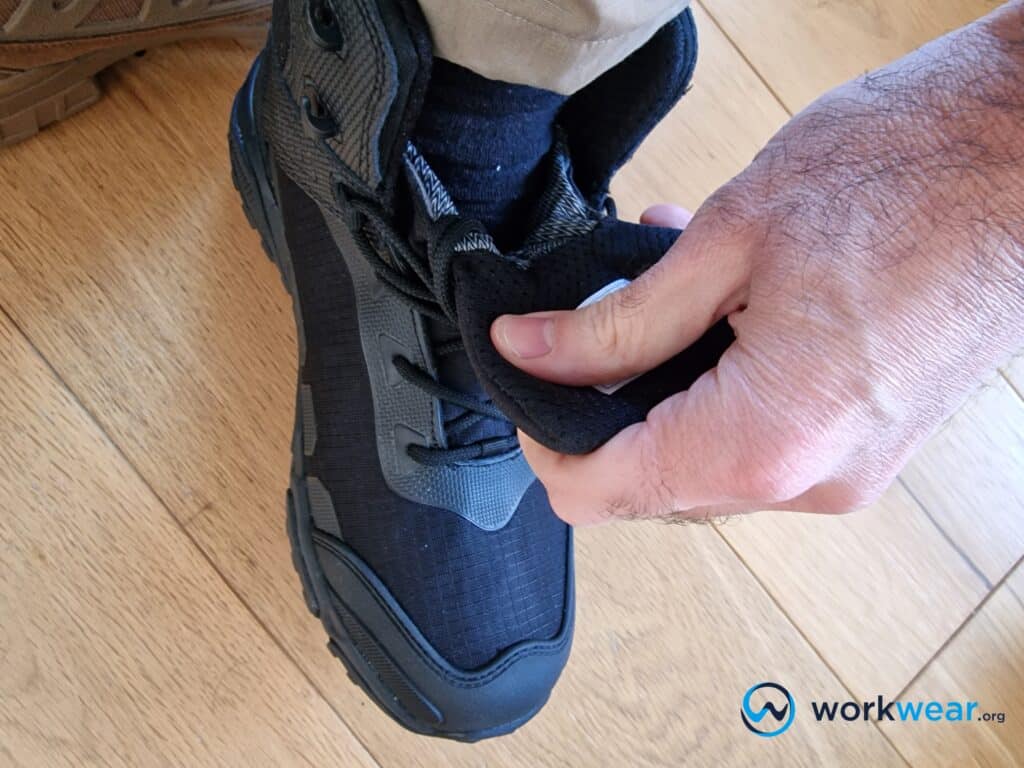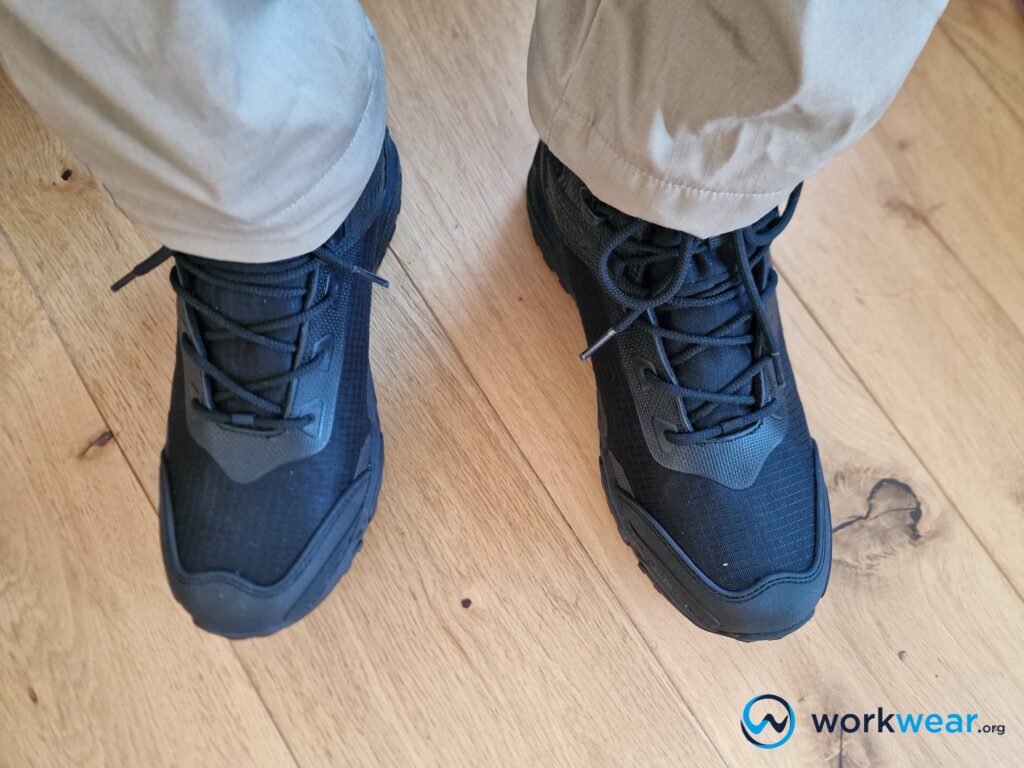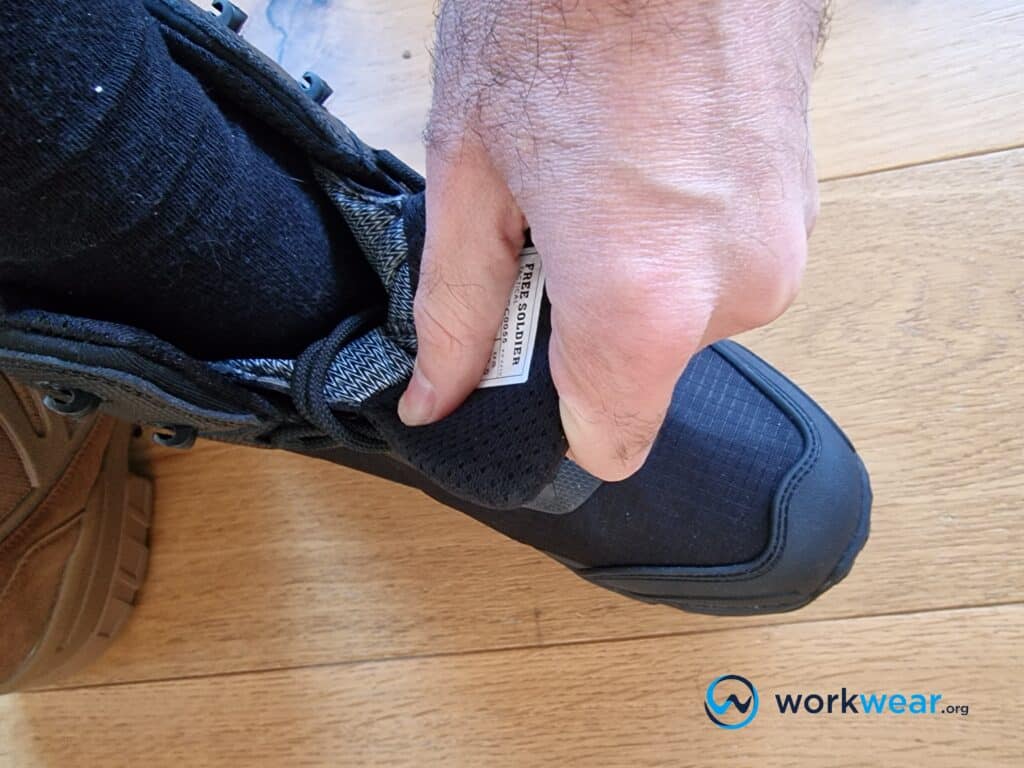Gusseted Tongue – Definition, Pros and Cons
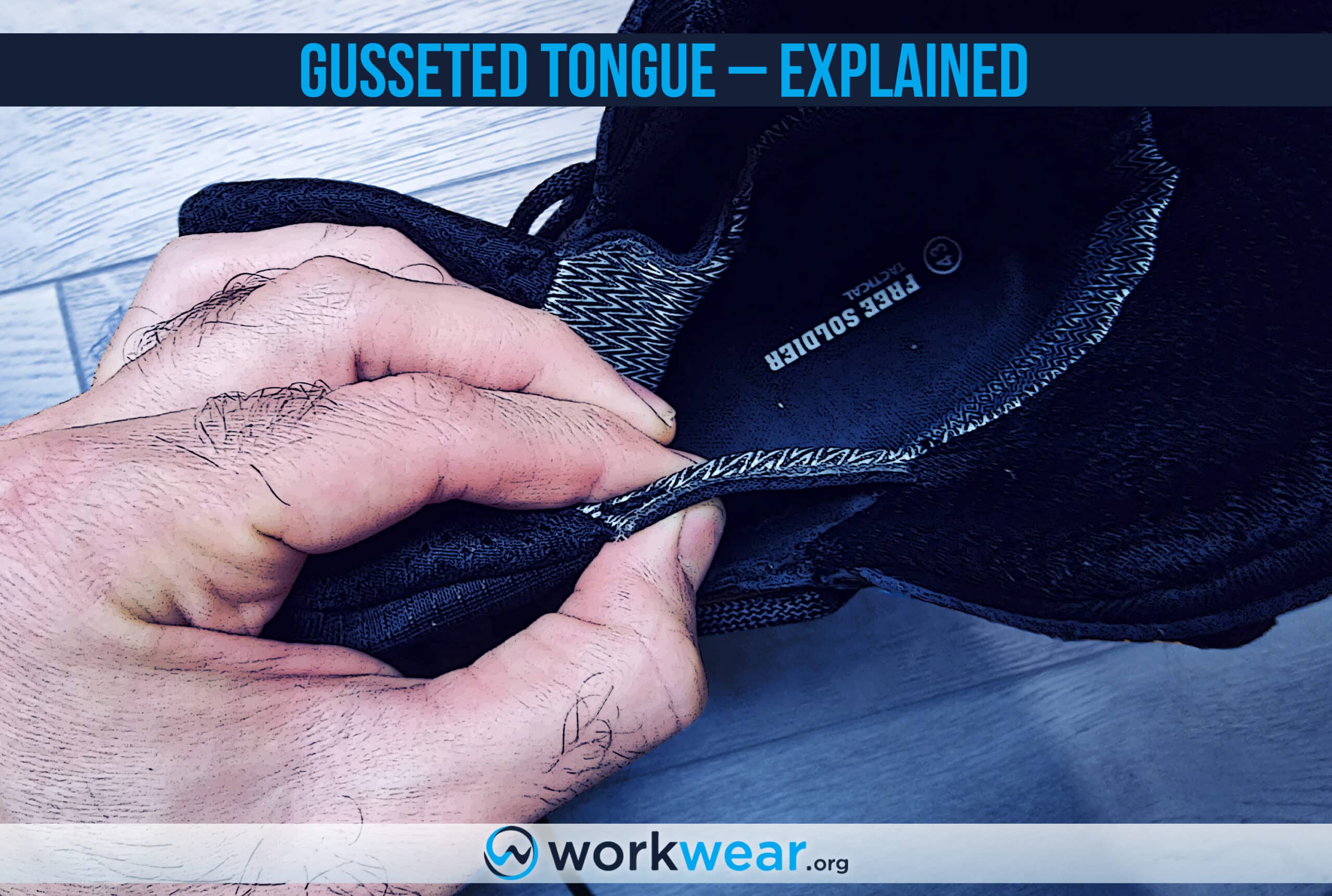
While shopping for work boots and shoes, you might encounter some confusing terms – one of these is “gusseted tongue”. While this component isn’t one of the major considerations when choosing work boots, it’s still a good idea to know what it’s all about. Are you curious about what a gusseted tongue is? Don’t worry- we’ve got you covered. Read on to learn about gusseted tongues and their roles in work boots and shoes.
What's a Gusseted Tongue?
A gusseted tongue has both sides connected directly to the upper.
Compared to a regular tongue that can be lifted and moved as needed, a gusseted tongue stays in place because it’s stitched permanently to the upper structure.
It also serves as a barrier to objects that might otherwise slip into the footwear, keeping the foot protected throughout the day in variable conditions. For this reason, it’s sometimes referred to as “bellows tongue.”
Pros and Cons of a Gusseted Tongue
Pros
Seals out wetness
The design of a gusseted tongue helps increase the work boots’ water resistance.
Unlike a normal tongue, a gusseted tongue’s base isn’t the only side that’s attached to the upper.
The left and right sides are also connected to the upper structure, preventing wet elements from seeping through the gaps. The gusseted tongue’s construction results in footwear that can keep the foot dry in the rain and while stepping on puddles.
This is why many waterproof work boots and shoes have gusseted tongues, which can also enhance water resistance in non-waterproof footwear options.
Prevents debris from entering
The gusseted tongue is permanently secured to the upper, leaving no gaps on its base and sides.
This design blocks debris, such as pebbles and grass, from getting in.
Work shoes and boots with gusseted tongues suit environments where small objects can accidentally slip into shoes.
The gusseted tongue design helps protect the skin from irritation caused by rubbing on the offending objects.
Stops small insects and other critters from getting in
A gusseted tongue forms a protective barrier in challenging outdoor settings.
Since it’s completely connected to the upper to form a solid structure, there’s no space where insects and other critters can crawl on their way inside.
This makes working in harsh outdoor environments much safer, as feet are protected from bites or scratches from small animals that can otherwise creep into work footwear with small gaps in their structures.
Stays in its proper position
A gusseted tongue’s sides are connected to the upper through strong stitches.
It stays in place, unlike a normal tongue that can be flipped and adjusted. Since the gusseted tongue is secured, there’s no risk of it moving sideways and twisting by accident, which can cause discomfort if it rubs against the foot.
The permanent position of a gusseted tongue also prevents the unstable feeling coming from the tongue from moving to the side instead of its proper position on top of the foot.
When wearing work boots with gusseted tongues, there’s no need to adjust the tongue throughout the day because it’s guaranteed to stay firmly in its correct position.
It can help retain comfortable warmth
Work boots for cold weather typically have insulation materials but can also have other components to keep the cold out. The upper is stitched with a gusseted tongue to create a solid structure.
Without leaving gaps where cold air can seep in, the boot’s interior can retain comfortable warmth for much longer.
This style protects the foot from freezing, especially when working outdoors in winter and other low-temperature environments.
Improves the boot's fit and stability
A gusseted tongue’s permanent attachment to the upper creates a secure fit. This design typically features a generously padded tongue, contributing to the snug feeling.
This snugness helps keep the foot secure for enhanced walking comfort.
It also helps protect the ankle from accidentally twisting, especially when navigating uneven or slippery surfaces.
Cons
It makes the boot difficult to pull on and take off
A gusseted tongue stays in position because it’s stitched to the upper.
You can’t flip it to make room for the foot’s entry, unlike a normal tongue.
This can make pulling on the footwear challenging, especially if it’s snug or the shaft is tall.
Extra force is typically needed to successfully pull the work boot on and off with a gusseted tongue in place, and the narrow opening can cause discomfort, particularly to those with wide feet.
Reduces breathability
The gusseted tongue’s ability to trap warmth also has a downside.
It prevents heat from getting out, making the boot’s interior more susceptible to overheating.
The risk is even greater when using the footwear in humid or hot work environments.
Since the gusseted tongue forms a solid structure with the upper, there are no spaces for heat to dissipate, especially if the upper doesn’t have a breathable design.
Stops moisture from escaping
A gusseted tongue blocks wet elements from entering and prevents moisture from leaving. This can be a problem if the foot sweats a lot and the boot’s upper materials are not breathable.
Without gaps where moisture can escape, the foot can become uncomfortably soaked with sweat with all-day boot use.
| Advantages | Disadvantages | |
| Gusseted Tongue | · Improves water resistance
· Blocks debris and other small objects · Prevents small insects and other critters from entering · Stays secured in position · Can help with warmth retention · Enhances the boot’s fit and stability
|
· Makes the boot challenging to pull on and remove
· Doesn’t allow heat to dissipate · Can trap sweat
|
Comparison of a Gusseted Tongue with a Normal Boot Tongue
A gusseted tongue has a different structural design compared to a normal tongue.
The former is stitched in place, while the latter can easily be moved and adjusted.
The difference between these tongue styles has distinctive benefits and disadvantages, as seen in the comparison table below.
| Pros | Cons | |
| Gusseted Tongue | · Stops water from seeping in
· Can trap comfortable warmth · Creates a secure, snug fit · Stops debris from entering · Doesn’t move from its secure position · Blocks small animals and insects from getting into the footwear |
· Increases the risk of overheating
· Can make the boot difficult to pull on and off · Stops moisture from quickly evaporating
|
| Normal Tongue | · Shields the top of the foot against abrasion
· Can be adjusted to widen the boot’s opening for easier boot on and off · Allows a bit of air to enter and circulate inside the boot · Lets sweat escape from inside the boot |
· Only offers minimal protection against wetness
· Can move unintentionally and cause uncomfortable friction · Shifting from the proper position can cause an unstable feeling
|
Personal Testing Experience
Here are our experiences while using two high-quality tactical boots with gusseted tongues. The Merrell Moab 2 8-Inch Tactical Response Waterproof Boot used waterproof leather and an impenetrable Merrell M Select DRY lining to block wet elements completely. The gusseted tongue helped stop liquids and debris from seeping in, keeping the foot dry in severely wet conditions. This supremely comfortable boot showcased a generously padded footbed with dedicated arch support and an air-cushioned for high energy return. The high-grip Vibram outsole dug firmly into the ground and secured our footing over challenging surfaces. A side zipper helped simplify the boot on and off, but it looked flimsy and may not last very long.
On the other hand, the Free Soldier Waterproof Tactical Boot had an athletic profile that looked great with uniforms and even with casual wear. It was one of the most lightweight tactical boots we’ve used, with a non-leather upper that protected the foot against the elements without the unnecessary bulk. A waterproof design stopped liquid absorption, while the gusseted tongue ensured that moisture didn’t have a chance to creep into the boot. It’s worth mentioning that the gusseted tongue didn’t allow the boot’s opening to widen, so pulling on and removing the boot became challenging.
Conclusion
A gusseted tongue’s distinctive structure offers benefits that a normal work boot tongue can’t. Its permanently attached design helps improve the footwear’s resistance to liquid absorption. It also stops debris and small animals from creeping in. Since it’s secured in place, a gusseted tongue eliminates the discomfort and instability of a regular tongue that moves unintentionally while walking. Work boots and shoes with gusseted tongues work best in wet environments and settings where small objects might get into the footwear.
FAQ's
- What work footwear styles typically use gusseted tongues?
- Gusseted tongues are often found in hiking boot-style work boots, waterproof, tactical boots, and some sneaker work boots.
- Is it possible for a work boot with a gusseted tongue to still be breathable?
- Yes, if the upper has materials that let air enter. Uppers made with mesh and other porous materials welcome more air and allow heat to escape, resulting in comfortable breathability even with the gusseted tongue in place.
- Can a gusseted tongue’s position be adjusted?
- No, it’s already secured in a permanent position, so adjusting without damaging the boot’s materials is impossible.
- Are gusseted tongues as comfortable as normal tongues on work boots?
- Yes, gusseted tongues often have the generous cushioning seen in normal tongues. The gusseted design can improve foot comfort by creating a snugger, more secure feeling while walking.
